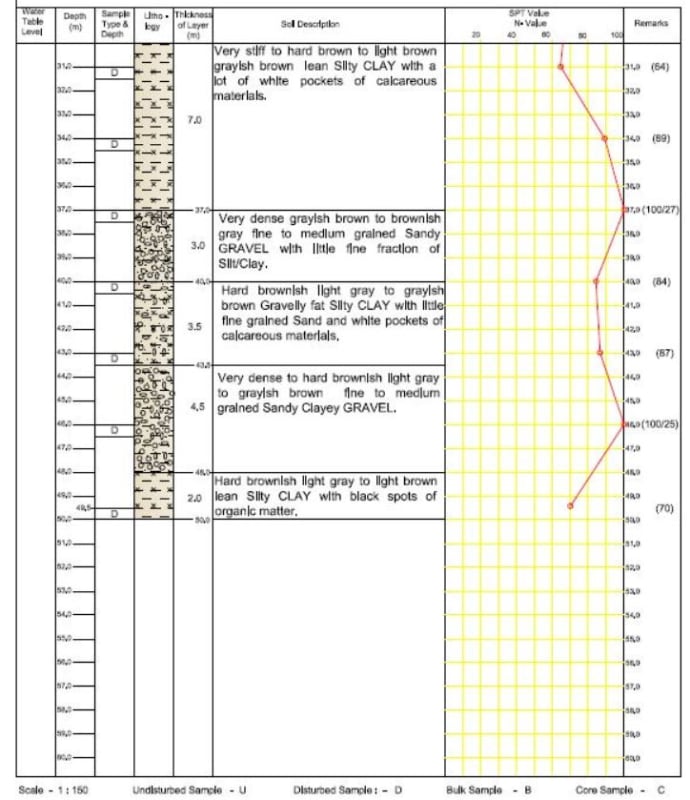Hi
In soil report we only get the Net allowable bearing capacity and we use that Net allowable bearing capacity which is usually around 200 kN/m2 at depth of 7-9m (soil type is very stiff to hard light brown to grayish brown fat silty CLAY), which is larger enough for building around 12 stories, for building more than 20 stories we most of time we needed piles. However, they just designed 35 stories building without pile, when I asked about how it is possible, they said we used the
Gross allowable bearing capacity = Net allowable bearing capacity + ϒ df (over burden pressure)
Gross allowable bearing capacity = 200 + 17* 10 = 370 kN/m2
Even the pressure under the mat foundation was around 450-500 kN/m2 !! they said we just reduced factor of safety to 2.1 and that the gross bearing capacity become large enough for checking the pressure under the mat foundation!!!
Can we do this kind of method to increase the allowable bearing capacity or they’ve done some thing ridicules?
In soil report we only get the Net allowable bearing capacity and we use that Net allowable bearing capacity which is usually around 200 kN/m2 at depth of 7-9m (soil type is very stiff to hard light brown to grayish brown fat silty CLAY), which is larger enough for building around 12 stories, for building more than 20 stories we most of time we needed piles. However, they just designed 35 stories building without pile, when I asked about how it is possible, they said we used the
Gross allowable bearing capacity = Net allowable bearing capacity + ϒ df (over burden pressure)
Gross allowable bearing capacity = 200 + 17* 10 = 370 kN/m2
Even the pressure under the mat foundation was around 450-500 kN/m2 !! they said we just reduced factor of safety to 2.1 and that the gross bearing capacity become large enough for checking the pressure under the mat foundation!!!
Can we do this kind of method to increase the allowable bearing capacity or they’ve done some thing ridicules?



